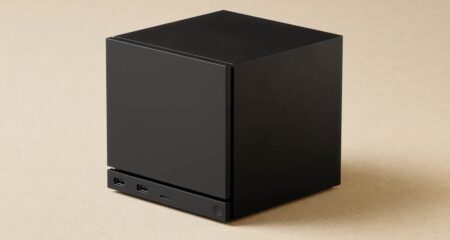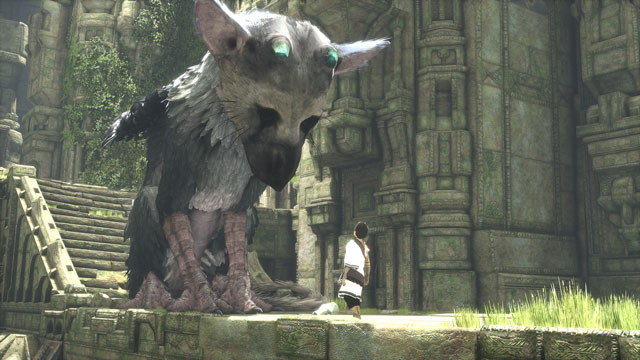
One of the most striking things about The Last Guardian — finally released after nine years in development hell — is how little it has changed since we saw the first trailer for the game in 2009. Most games that spend so long in gestation before disappearing for a while re-emerge looking markedly different.
But the vision of creator Fumito Ueda remains intact, even after all this time and a switch of platforms from PS3 to PS4. It’s just that the technology now exists to bring his creation to life — a game centred on the relationship between a boy and a gigantic bird-cat-dog hybrid named Trico. Though the game’s age shows in its control scheme and some of the environmental textures, Trico is perhaps one of the most astonishing gaming creations of the year.
I’d compare the awe that Trico inspires (it’s not clear whether it’s a male or female) to the first time I saw Jurassic Park. Taking a leaf from Steven Spielberg’s book in Jurassic Park, Ueda resists the temptation to anthropomorphise Trico or to make it too monstrous and fantastical. It’s an imaginary animal, but it feels as though it could exist.
Trico is adorable, but because it so uncannily echoes the personalities and mannerisms of domestic dogs and cats. It’s in the feline way its haunches tense as it is about to jump and the way it bats lamps dangling on chains like a housecat toying with some yarn. Other times, its bearing is more canine as it gets the scent of a tasty food morsel in its snout or shakes itself off after rolling around in a pool of water.
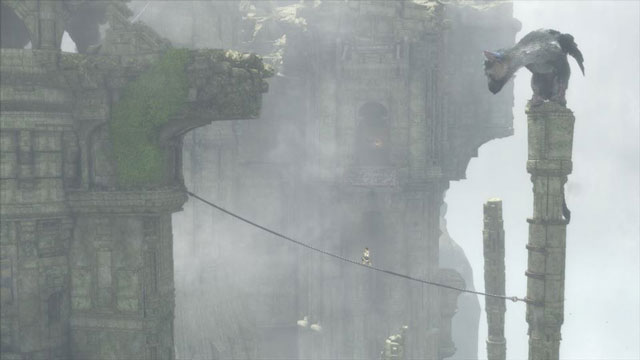
The amount of care lavished on the artificial intelligence for the beast is a reminder of how little this aspect of game development has progressed since Half-Life’s marines startled us with their flanking manoeuvres. Word has it that problems with the AI are a major reason for the long development cycle; it’s far from perfect in the final product, but it is deeply convincing.
Trico is your companion in an enigmatic world of lush forest land, peaked mountains and crumbling fortresses. Your character — a small boy — awakes in the remnants of a once-majestic castle alongside a wounded and wary Trico. Both lost and alone, boy and beast depend on each other to escape the ruins and survive its terrors.
The boy cannot directly control Trico; he can only try to influence the animal. Initially, this means coaxing and shoving Trico to move in the right direction, but as the game progresses and the pair begin to bond, the boy can give Trico simple commands. Eventually, Trico will even help you find your way when you’re not sure of which direction to go.
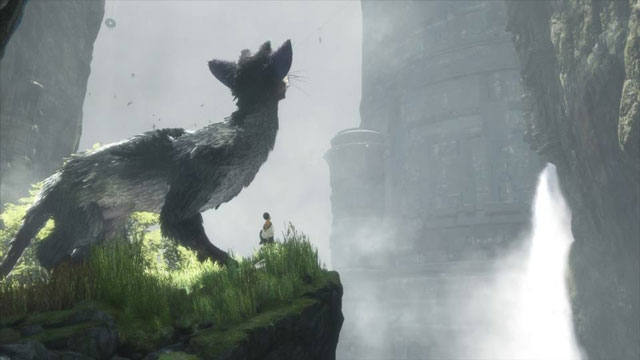
Trico’s AI is occasionally the source of some frustration, particularly in the early stages of the game when cajoling it to move in the right direction can try your patience as much as calling a wayward cat home for supper. There are moments in the game where you know what to do and what Trico should be doing, but the creature just won’t comply.
The Last Guardian’s detractors claim that the game feels like an artefact from the PS2 or early PS3 eras in terms of game design. That it does, but for me that’s a recommendation rather than a drawback. In many respects, the PS2 was a golden age for single-player console games and The Last Guardian echoes the best game and visual design of that era.
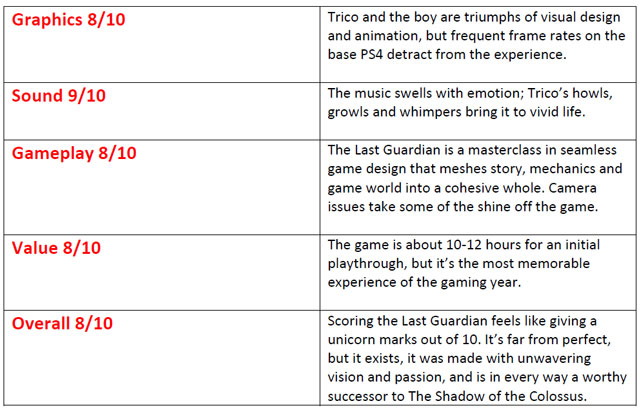
Like Ueda’s other games — the much-loved PS2 classics, Ico and The Shadow of the Colossus — The Last Guardian is an elegant blend of puzzle-solving and platform traversal, with a small helping of combat. The puzzles aren’t particularly difficult, but they are satisfying when they click. The platforming, likewise, doesn’t demand precision or timing, but has a pleasingly tactile feel to it.
Apart from an annoying controller tutorial pop-up you’ll see from time to time, the interface is sparse. Everything you need to know you can read from the body language of Trico and the boy, making a pleasant change from the cluttered heads-up displays of nearly every modern game. Though there are a couple of cut scenes and a few lines of dialogue, the story mostly unfolds through the wordless interactions of the two companions.
It’s a game that delights with its minimalism, with no need for the padding of side quests and open worlds and endless cinematics and collectibles. The Last Guardian is not for everyone — some may struggle to cater with a control scheme that harks back to the PS2, the frequent frame-rate drops, the unpredictable AI and the disobedient camera.
But patient gamers who loved the melancholy atmosphere and emotional timbre of Ueda’s previous masterworks will find that The Last Guardian was worth the wait. That Sony has stood behind this troubled game for so long seems miraculous; this is a shimmering artefact from a past that never existed, a mythical beast come to life. Who needs technical polish when you’ve got so much soul? — © 2016 NewsCentral Media
Reviewed on PS4 Pro


